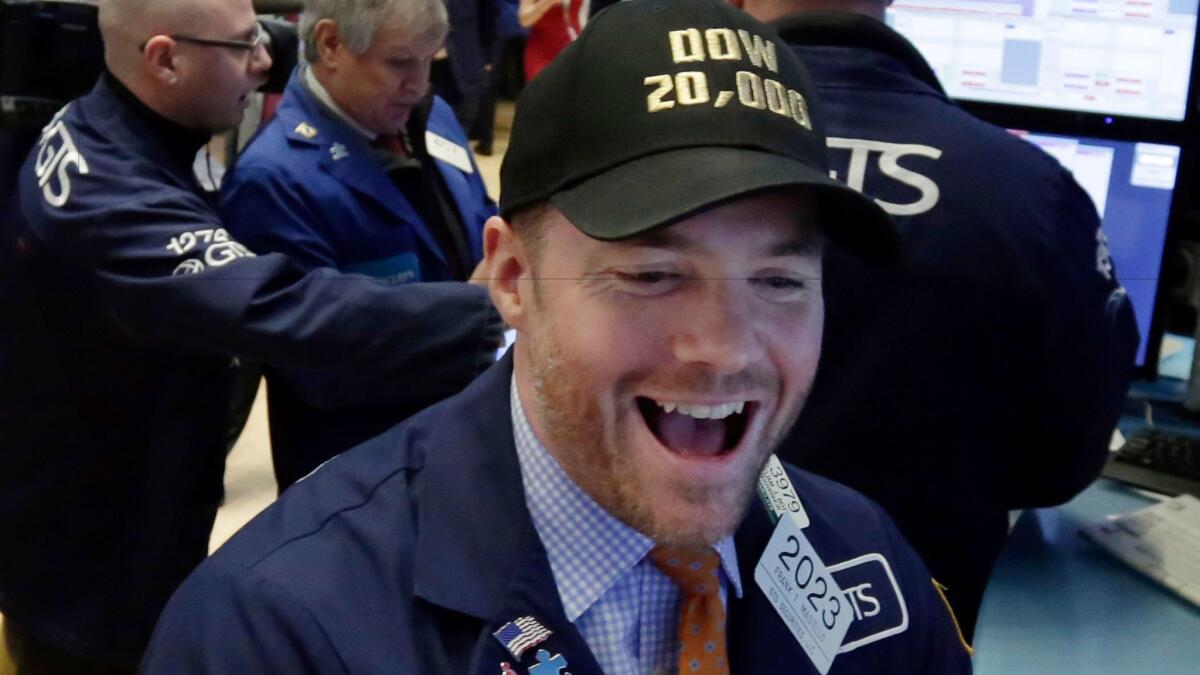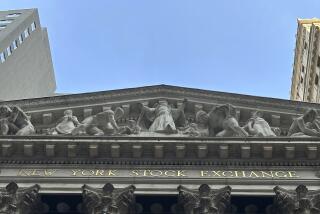Dow Jones industrial average hits 20,000, but what does that mean? Hereâs a crash course

Mention âthe Dowâ and, to most people, that means the stock market.
The Dow Jones industrial average is an instant way of telling the world which way the market is moving, even if the average isnât an accurate measure of the thousands of stocks listed on the nationâs exchanges.
The average comprises only 30 stocks, whereas the Standard & Poorâs 500 and Nasdaq composite indexes are more encompassing and provide a more thorough measure of the overall market.
Regardless, the Dowâs 30 stocks include some of the nationâs largest blue-chip companies, whose shares are among the most widely held by investors, and that has given the Dow the distinction of representing the market for more than a century. On Wednesday, the index punched through the 20,000-point barrier for the first time.
Although the Dow is a narrow gauge, its performance has been close enough to the broader indexes to serve as a barometer of the market. Indeed, the S&P 500 and Nasdaq also have been trading at or near record highs.
The Dow traces its roots to 1896, when Wall Street Journal co-founder Charles Dow simply added up the closing prices of one share of each companyâs stock, then divided the figure by the number of companies to create an average.
The measure started with 12 important stocks of the day and later was expanded to 30 industrial companies.
But as the Dowâs component companies changed over the years, and the companies split their stocks, simple math no longer sufficed to meaningfully calculate the averageâs daily point moves.
So the Dow now uses a divisor that is periodically adjusted to keep the average historically consistent, although the measure is still called an âaverage.â
The Dowâs component mix also has often changed, and today it includes retailers such as Wal-Mart Stores Inc., technology firms such as Cisco Systems Inc. and financial services firms such as Goldman Sachs Group Inc.
But simple math still accounts for how the Dowâs percentage gains keep getting smaller each time the index climbs 1,000 points.
When the Dow climbed above 6,000 in October 1996, that was a 20% surge from its 5,000-point level.
But when it reached 20,000 from the 19,000 mark attained late last year, the gain was only 5.3%.
Regardless, whenever the Dow has reached a major, round-numbered benchmark, itâs both historically significant and often a bullish psychological indicator for investors as the market heads into uncharted waters.
Twitter: @PeltzLATimes
ALSO
Tech workers arenât known for political activism. But that may be changing
California fails to inspect several dozen hospitals with high infection rates
Record-setting number of vintage motorcycles head to auction
More to Read
Inside the business of entertainment
The Wide Shot brings you news, analysis and insights on everything from streaming wars to production â and what it all means for the future.
You may occasionally receive promotional content from the Los Angeles Times.











